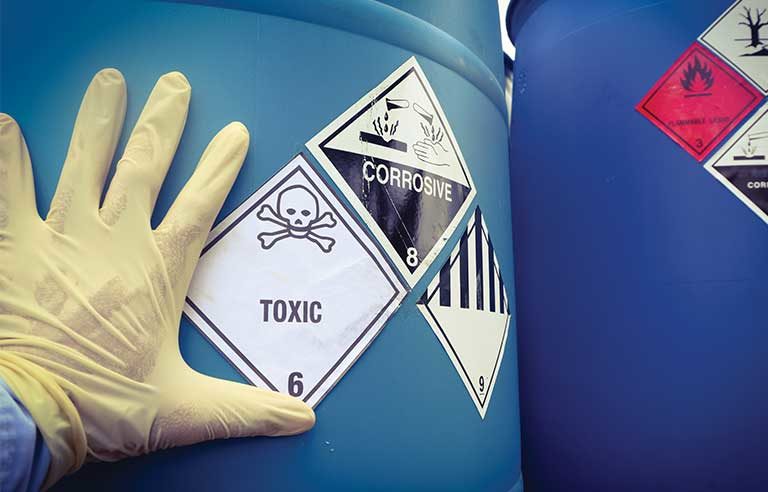Reproductive hazards
Reduce the risks

Photo: Kittisak Kaewchalun/iStockphoto
Whether chemical, physical or biological, some workplace hazards can affect workers’ reproductive systems – leading to fertility problems and potentially impacting the health of their children.
“Reproductive hazards alter their ability to have the family experience that a lot of workers envision, and that causes additional physical and mental pain and suffering,” AFL-CIO safety and health specialist M.K. Fletcher said. “Some exposures result in children who have medical disabilities that have to be treated for a lifetime.”
To ensure workers – and, by extension, their families – are protected from reproductive hazards, awareness, communication and the Hierarchy of Controls are key, experts say.
Hazards here, there, everywhere
Radiation, heavy metals (including lead), bloodborne pathogens and solvents – along with various chemicals – are among the more common reproductive hazards.
Many can lead to “take-home exposures.” These occur when a worker unknowingly brings home a chemical or pathogen on their skin, hair, clothes and/or shoes and, in turn, exposes family members to the hazard.
“Employers have that responsibility to look at what they’re bringing into the workplace, how it’s being used and how they’re controlling those exposures,” Fletcher said. “They’re the ones who have all the information from the chemical manufacturers, and they’re required to inform their employees.”
OSHA’s standards for general industry address some reproductive hazards. In 1910.97, nonionizing radiation is explained. In 1910 Subpart Z, the agency addresses air contaminants (1910.1000), lead (1910.1025), bloodborne pathogens (1910.1030), ethylene oxide (1910.1047) and other hazards to the reproductive system.
Frankie Wood-Black, division chair for engineering, physical science and process technology at Northern Oklahoma College, adds that workers and safety professionals should be informed about “all the new materials we’re dealing with – and all the nanomaterials. Those become a case where the chemical hazard protections need to be in place because we just don’t know, and we won’t know for another 10, 15, 20 years.”
NIOSH even recognizes shift work and demanding jobs as reproductive hazards. The agency’s website notes that working at night, during normal sleep hours or for long hours can alter the body’s circadian rhythms. Studies have linked this to menstrual disorders, miscarriages and preterm birth.
When it comes to identifying workplace hazards, employers should include employees in the process, Fletcher said. “A lot of times you have managers overseeing a process, but they’re not doing it day in and day out. The workers are, and they know where things fail and where things are more likely to fail and can offer some really informative input.”
Post a comment to this article
Safety+Health welcomes comments that promote respectful dialogue. Please stay on topic. Comments that contain personal attacks, profanity or abusive language – or those aggressively promoting products or services – will be removed. We reserve the right to determine which comments violate our comment policy. (Anonymous comments are welcome; merely skip the “name” field in the comment box. An email address is required but will not be included with your comment.)

